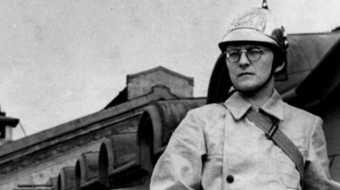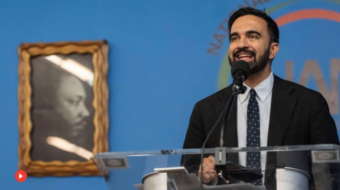
Book Review
“Zombie Economics: How Dead Ideas Still Walk Among Us”
By John Quiggin
2010, Princeton University Press
216 pages, $24.95 hardcover, Kindle version also available
Several months ago I had the pleasure to happen upon Australian economist John Quiggin’s thoughtful and entertaining “Zombie Economics: How Dead Ideas Still Walk Among Us.” Admittedly, the dust jacket, derived from the lurid 1950s EC horror comics that I have long had a soft spot for, was what first caught my eye.
The zombie metaphor is both witty and apt when discussing how ideas about society and finance that have alarmingly failed refuse to stay dead and buried. Rather, they rise again and again to make true progress a difficulty.
The book was published in 2010, before ordinary citizens embraced the idea of taking to the streets and making their concerns about our nation’s failed economic policies starkly visible through the Occupy actions yet unfolding.
It also predated the series of utterances and debates issuing from the large cast of Republican presidential hopefuls, who crank out many odd ideas but tend to congeal around the gospel that the market is the only hope for our salvation. All of this tends to deepen my appreciation for Quiggin’s book.
It’s not just imagination and wit that make this book useful and engaging. Its focus and brevity make the principles and arguments easy to grasp and connect to one another. Anyone frustrated when confronted by the many people still devoted to market liberal policies will find the plain and logical essays in each chapter of immense help in forming effective arguments.
Quiggin’s basic assumption is that a number of widely touted theories – that deregulation was a useful strategy, that the market could be left to solve economic dilemmas, and that policies designed to benefit the wealthy would trickle down to the many – can be demonstrated to have failed during the past 30 years. He outlines the way each idea was brought to prominence, and the consequences of their adoption into policy, and examines why and how each failed.
Among the notions he tackles are: the Great Moderation (essentially, the idea that cycles of boom and bust have been conquered by the policies now being employed), the Efficient Markets Hypothesis, Dynamic Stochastic General Equilibrium (in short, the development of “Real Business Cycle” theory), Trickle-Down Economics, and Privatization. A layperson (such as myself) can gain some solid insight from these analyses. Quiggin makes each chapter seem like an efficient and lucid autopsy.
Like the zombies in horror films, each of these has proven a stubborn foe. Many of these failed ideas continue to lumber forth, darkening the path ahead.
Quiggin, a professor of economics at the University of Queensland in Australia, reviews how, after the great Depression and World War II, the theories of British economist John Maynard Keynes gained recognition. Keynes promoted the idea of public works and other expenditure to deal with recessions and depressions. He felt that markets alone couldn’t increase demand.
Quiggin argues that Keynesian economics was abandoned prematurely despite its proven contribution to many decades of success in enlarging the share of prosperity in the West. The resulting increase in employment and prosperity led many to feel that “victory over the business cycle” had been realized. But the 1970s delivered an end to a long postwar boom. What followed was a severe change in direction toward “market liberalism,” championed principally by Milton Friedman and enthusiastically adopted by the governments of Ronald Reagan and Britain’s Margaret Thatcher.
Not that he simply promotes the idea of a return to past policies and practices. Quiggin suggests the solution lies in honestly rethinking the experience of the 20th century and developing a new approach. He suggests that reasserting the crucial role of the state in risk management may diminish “grotesque inequalities.” He offers brief but telling recommendations on what any 21st century approach should focus on: “More on realism, less on rigor. More on equity, less on efficiency. More on humility, less on hubris.”
His challenge to those engaged in such pursuits is to objectively recognize what has worked and what has failed. It’s a persuasive case that benefits from language free from alarm and an orientation firmly pointed forwards. Hopefully such thinking will help us out of the horror film our times has been transformed into.










